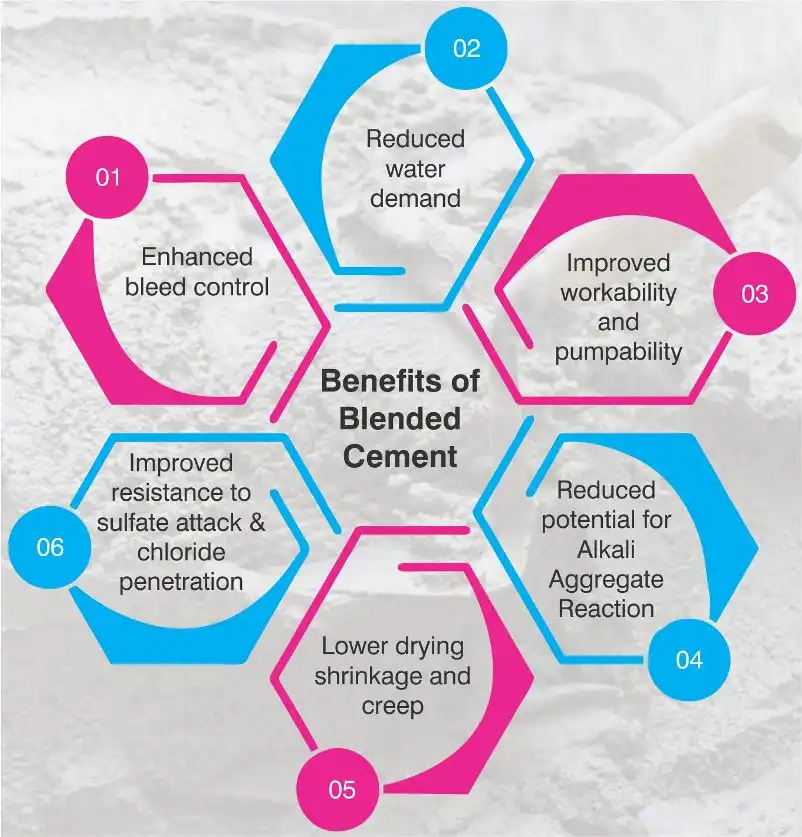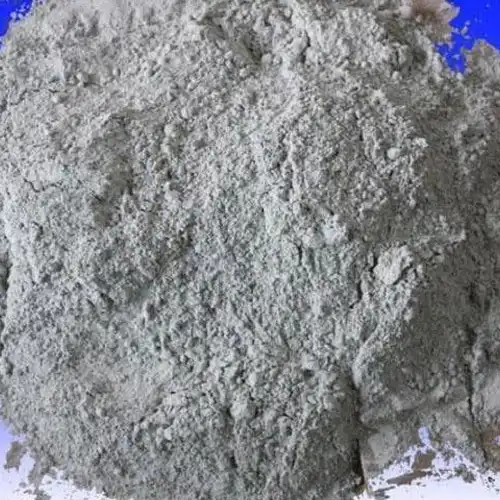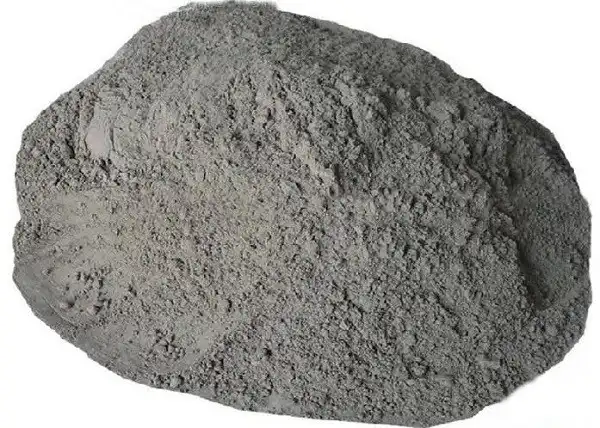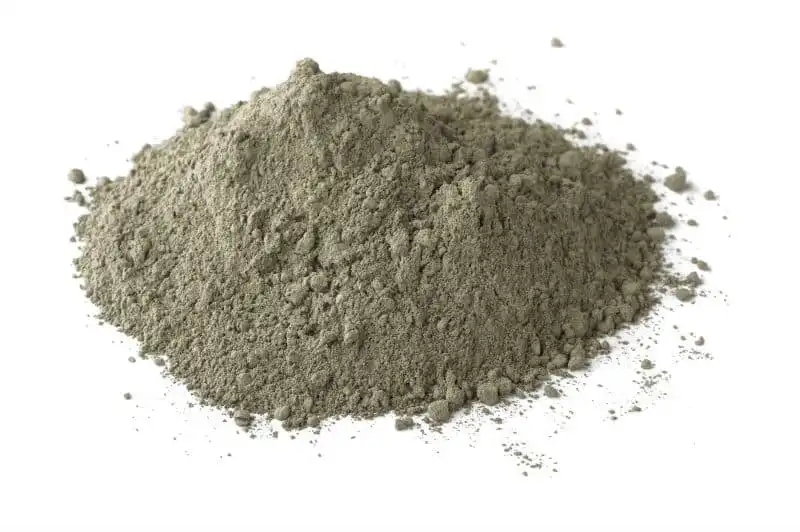Blended cement are produced by inter-grinding Portland cement clinker together at temperatures of about 1400–1500°C.) with supplementary cementitious materials (SCMs) or by blending Portland cement with SCMs such as fly ash from coal combustion in electricity-producing plants or blast furnace slag from iron-making plants. The production of blended cement involves interring one or more additives.
The dominant materials used for blended cement are BFS, fly ash and silica fume. It offers several consumer and production-based benefits. From a final use phase perspective, It can help reduce required inventories for fly ash at ready mix locations as well as provide high quality and consistent product that offers early strengths and workability. ASTM C595 provides prescriptive-based specifications for specifically blended cement that consist of portland-cement clinker ground or blended with suitable proportions of granulated blast-furnace slag or natural or artificial pozzolans. These include portland blast-furnace slag cement, Portland pozzolana cement, and slag cement.
Advantages of blended cement
The benefits of blended cement fall into two broad categories: environmental and performance-related. Using supplementary cementing materials can make concrete more economical, increase strength and durability and influence other properties.
Technical advantages;
- Typically achieves the same level of slump, a measure of consistency, with less water than concrete containing only portland cement.
- Improves the workability of fresh concrete, making it easier to place and finish. Using less water also reduces shrinkage and permeability.
- Contribute to the long-term strength gain of concrete. Silica fumes can hasten strength development and reduce curing time.
- Lower heat of hydration and less risk of thermal cracking
- Reduces heat of hydration and thermal stresses.
- Reduced overall concrete cost:
- The mineral supplements used to replace portland cement require significantly less processing and typically lower the cost of the concrete.

Environmental Advantages
- Lower water-cement ratios are used in construction, making it easier to work with and shape.
- Adding mineral admixtures such as slag, which is produced as a byproduct of other industrial processes, lowers the energy expenditure in producing overall quantities of OPC by around a megawatt per ton.
- The mineral admixture of blended concrete mix produces the waste products of steel plants and coal power plants, among others.
- By using this waste in cement, it lowers the demand on other components like limestone, silica and clay, helping to preserve these natural resources.
- Using additives to reduce cement production also reduces pollution.
Types of Blended Cement
There are four types of blended cement as ASTM designates, each of them are discussed below;
Type IS (X), Portland-Slag Cement
Portland Slag Cement, commonly known as PSC, is blended cement. Slag is, essentially, a non-metallic product consisting of more than 90% glass with silicates and alumino-silicates of lime. Its features include;
- Higher level of compressive strengths in concrete when compared to OPC
- Higher flexural strength to concrete, which enhances its structural stiffness and minimises load deflections
- Reduces the ingression of harmful substances such as chlorides and sulphates due to low permeability
- Environment-friendly due to reduced GHG emissions

Type IP (X), Portland-Pozzolan Cement
The Portland Pozzolana Cement is a kind of Blended Cement that is produced by either inter-grinding of OPC clinker along with gypsum and pozzolanic materials in certain proportions or grinding the OPC clinker, gypsum and Pozzolanic materials separately and thoroughly blending them in certain proportions. Fly ash is the most common pozzolan used in blended cement. It features include;
- High compressive strength
- The application includes masonry mortars and plastering
- Protects concrete against alkali-aggregate reaction
- Makes the concrete more impermeable and denser

Type IL (X), Portland-Limestone Cement
Portland-limestone cement (PLC) is a blended cement with a higher limestone content, which results in a product that works the same, measures the same, and performs the same, but with a reduction in the carbon footprint of 10% on average. It is used just like traditional portland cement in mixed designs. It can be made at any portland cement manufacturing plant. While ordinary portland cement (OPC) may contain up to 5% limestone, PLC contains between 5% and 15% limestone. Its features include;
- Increases durability
- Excellent placing and finishing properties
- Shrinkage and heat of hydration improved
- Enhanced setting and strength performance

Type IT, Ternary Blended Cement:
Ternary is composed of three different cementitious materials. Its features include;
- High strength
- Corrosion resistance
- ASR resistance
- Elimination of thermal cracking
- Low permeability
- Sulfate resistance

[The highest amount of material in the blend determines its type. For example, if fly ash were the highest component, it would be considered Type IP. The “(X)” in the designation refers to the percentage of the ingredient included in the blended cement. The remainder is Portland cement. For example, Type IL (10), portland-limestone cement, contains 10% limestone and 90% portland cement.]
Applications
- Major engineering projects
- Domestic construction
- Precast concrete
- Stabilisation including pavement recycling for road construction
- Mining applications
- Specialist formulations such as adhesives, renders, mortars and grouts
Conclusion
Blended cement offer sustainability and high performance. The growing use of supplementary cementitious material blended portland cement is due in part to numerous performance factors, including low permeability, resistance to chlorides and sulfates, mitigation of alkali-silica reaction, greater strength, lower temperatures for mass concrete, and improved workability.

